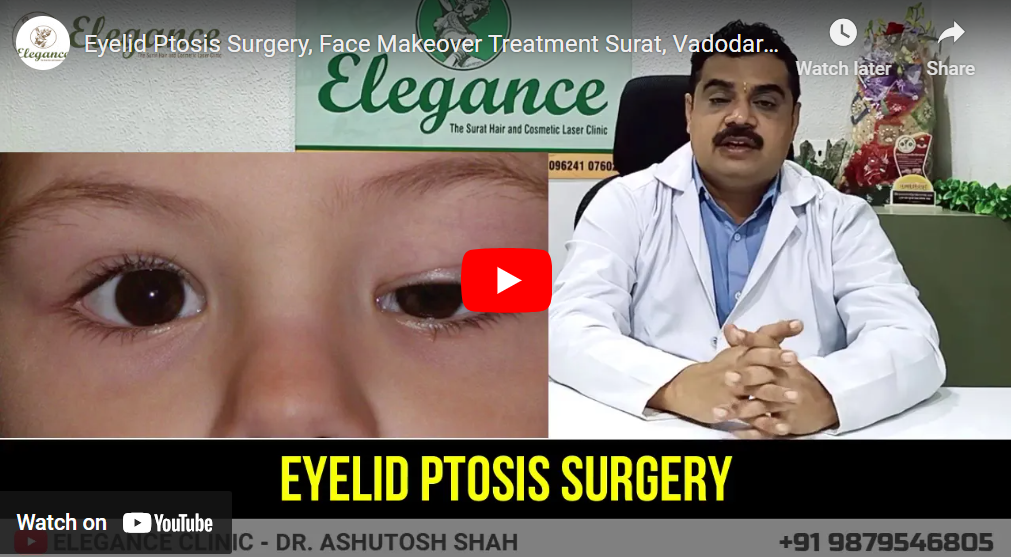Ptosis surgery is indicated when there is a visual deficiency due to ptotic upper eyelids. Patients often report of lack of peripheral vision or look through their eyelashes. Visual acuity can change when they raise their eyelids with their fingers or forehead muscles. Excess skin can create a certain issue that the skin can drop over the eyelid margin and darker vision like a window cover. Surgeons can chart the loss of a visual field by conducting a perimeter. Insurance can cover the repair if a physician submits evidence of vision loss due to a ptotic upper eyelid or excess upper eyelid skin.
Most complications for ptosis surgery consist across the visibility of the cornea. Situations like thyroid orbitopathy, progressive external ophthalmoplegia, or loss of Bell’s syndrome may make people more vulnerable to exposure keratopathy after ptosis surgery: a more conservative approach is needed in these cases. In order to determine the risk of dry eye symptoms developing after surgery, a full dry eye assessment is essential. It is essential to implement an accurate workup before ptosis restores to rule out other causes of ptosis or possible risk factors. CT scan of the orbits must be performed if an orbital condition such as thyroid orbitopathy or an orbital tumor is suspected. Slit-lamp assessment is important for the detection of corneal or dry eye erosion.
Dr. Ashutosh believes in the health and safety of patients, so we have the experts who are excellent in their work as well as brilliant experience holders. We welcome you to come to us for the ideal solution for your complications.
If you have any questions regarding our services, please contact us or call at +91 9879546805.
Hear from our patients
EXCELLENTTrustindex verifies that the original source of the review is Google. Had a vericose vein surgery for both legs.such a supportive doctors and team.Special Thanks to Dr.Aashutosh shah,sunnybhai and all the staff members for wondrful service.Trustindex verifies that the original source of the review is Google. Thank you sir your treatment is very goodTrustindex verifies that the original source of the review is Google. Very happy.. Very good service.. Very good staff..Trustindex verifies that the original source of the review is Google. Amazing staff, totaly supportive. Dr ashutosh sir & his Team totaly take care of the patients & does the procedure properly
Frequently Asked Questions
Having doubts and questions? These are few questions our customers normally ask us!
What are the drawbacks of ptosis surgery?
While ptosis surgery is generally safe, potential risks include asymmetry, under-correction or over-correction, and, rarely, infection or adverse reactions to anesthesia.
What celebrities have ptosis?
Several celebrities have been speculated or confirmed to have ptosis, though it’s essential to respect privacy and understand that each case is unique.
At what age ptosis surgery is done?
Ptosis surgery can be performed at any age, depending on the severity of the condition and its impact on vision and quality of life.
Is eyelid ptosis surgery painful?
Patients may experience minimal discomfort post-surgery, but pain is typically well-managed with medication. The procedure itself is performed under anesthesia to ensure comfort.
Can ptosis come back after surgery?
In rare cases, ptosis may recur, especially if it’s related to underlying medical conditions. Regular follow-ups can help monitor and address any changes
How do you treat ptosis without surgery?
Non-surgical treatments for mild ptosis may include exercises, special glasses with crutches, or temporary fillers, although these options may not offer permanent results.
How can I lift my eyelids without surgery?
Non-surgical methods like Botox injections or thermage can provide temporary improvement in eyelid appearance but may not be as effective as surgery for significant ptosis.
Can ptosis get worse with age?
Yes, ptosis may progressively worsen with age due to the natural weakening of muscles and tissues around the eyes.
What is the success rate of ptosis?
The success rate of ptosis surgery is generally high, with many patients achieving significant improvement in vision and appearance.
How long is ptosis recovery?
Recovery varies by individual but typically involves a few weeks for significant healing, with complete recovery and final results visible within a few months.
Contact Us
Ready to discuss? Fill out our contact form for a confidential consultation.








